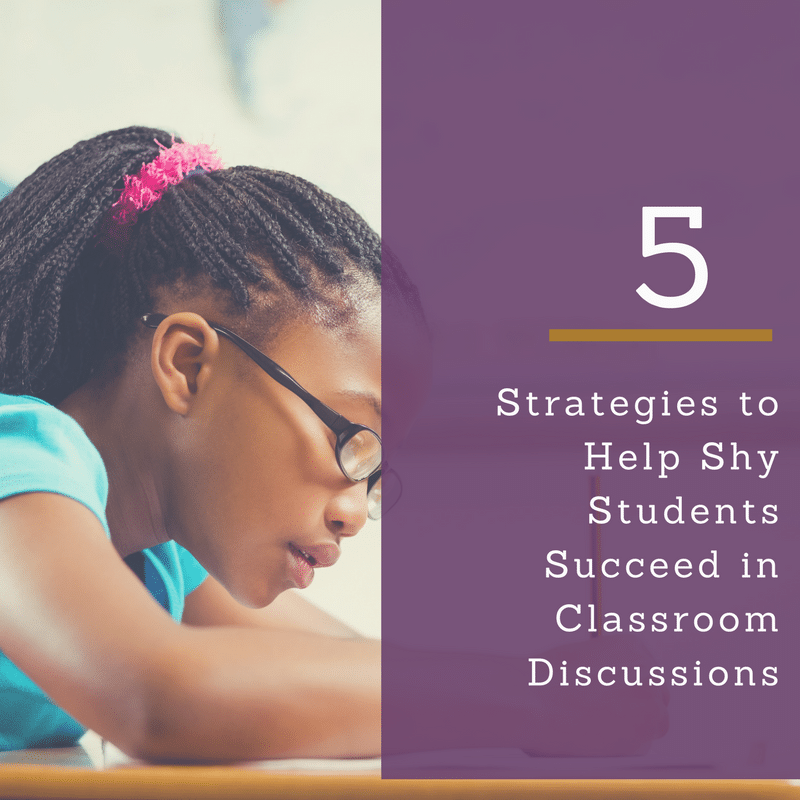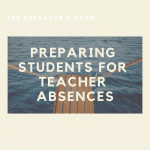In my early years of teaching, I spent much of my time and energy focused on classroom management. Included in this was teaching students how to have a productive classroom discussion. I would plan mini-lessons about appropriate interjections, how to respond to someone who disagrees with your viewpoint (without being aggressively loud and using profanity), the importance of taking turns and listening, etc. It wasn’t until a few years into teaching that I realized I was completely focusing my efforts on my more vocal students, and forgetting about my students who were shy and quiet.
The reality is that in most classrooms, our outgoing students get most of the attention from teachers, while the needs of quieter students are often overlooked.
Shy students often have interesting thoughts and ideas that can add a lot to classroom discussions. Some of my most brilliant students would share their thoughts with me after class, or in a written note, because they were just too shy to speak up in a classroom discussion. Getting my apprehensive students to feel comfortable enough to share their thoughts was a different kind of challenge, and one that gets pushed to the end of the list of priorities in terms of what’s important in classroom management.
[bctt tweet=”Shy students often have interesting thoughts and ideas that can add a lot to classroom discussions.” username=”EducatorsRoom”]
I put together a list of strategies that have worked for me in the past, and strategies I have seen work in other classrooms. These strategies benefit some of our shyest students, while also helping some of our more outgoing, boisterous students too.
Think/Pair/Share
Instead of calling on random students, try a strategy that will help introverted students process what they are thinking. I personally like the “Think, Pair, Share” strategy, but any strategy that allows students more think time, and allows them to practice verbalizing their thoughts is beneficial. The premise of this strategy is after the teacher poses a question, they then give students enough time to formulate their thoughts in writing. The amount of time your students need may vary, but anywhere from 5 to 10 minutes should suffice. Then, students pair up with someone to discuss their thoughts. This gives students a chance to verbalize what they were thinking and it serves as a way of rehearsing what they want to say. Any version of this strategy is beneficial, even if it is just having students write down their thoughts before starting a discussion, or sharing their thoughts with a peer before a discussion.
Host Online Discussions
While verbal communication is important, and is probably easiest for teachers to include in class time, using a different mode of communication could help shy students participate more. While it may be uncomfortable for a quiet student to interject their thoughts into a fast paced classroom discussion, it is different when communicating on a discussion thread or responding to a blog post. For shy students, written communication is less stressful and students today are extremely comfortable using online platforms.
Student Choice
Let students choose their partners and groups sometimes. Whenever I ask my shy students what teachers could do to make learning more comfortable for them, they always say “let me choose who I work with.” Breaking into smaller groups for discussions is beneficial for shy students, but some students will not be comfortable enough to share their thoughts unless it’s with peers they trust.
Be Flexible With Presentations
For presentations, allow for some flexibility. If it’s possible for students to pre-record their speech or presentation, let them. If you are working on public speaking skills, have your student do a Q & A session after the pre-recorded presentation, so they still get the practice of standing in front of a crowd. Or, if you can arrange for smaller group presentations outside of class time, this could help alleviate some of the anxiety for shy students. Susan Cain, the author of Quiet: The Power of Introverts in a World That Can’t Stop Talking, says that it is important for educators to think of anxiety levels on a scale of 1 to 10. She says that it’s okay to push your students to a zone within 4 to 6. But, if you have a kid who has severe anxiety, described as someone who is in the 7-10 zone, then it can be dangerous to push your students at that point. “They might succeed, they might do well and feel this is great. But there’s too big a risk of it backfiring and the experience going poorly and the fear being further codified in their brain.”
Try Other Modes Of Communication
It is possible to use non-talking forms of communication to get students to share their thoughts. I like to use the “four corners” strategy, where you label each corner of the room as strongly agree, agree, strongly disagree, and disagree. Then, you read off statements and have students move to the corner that best describes their reaction to your statement. Then, once students have chosen their reaction, have them hold small, more intimate conversations with the people standing with them. For some shy students, knowing that there are other students who feel similarly to how they do, will ease some of their anxiety about sharing their opinions. Teachers can also use thumbs up, thumbs down, on a scale of 1 to 5, touch your nose if… there are a ton of ways to get shy kids to communicate and share their thoughts without speaking.
I would love to hear thoughts and strategies from other educators on what they have done to help their shy students succeed.






